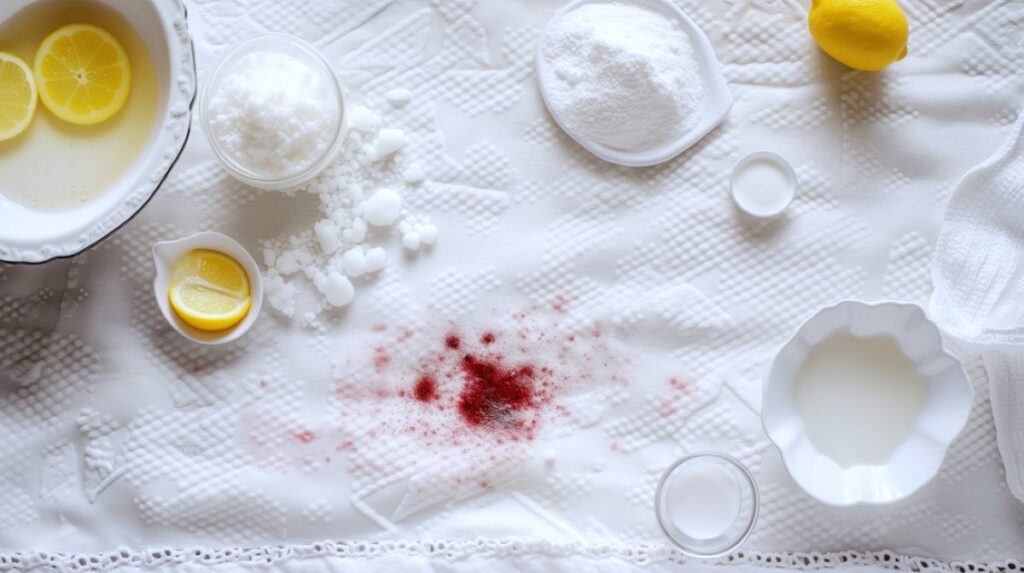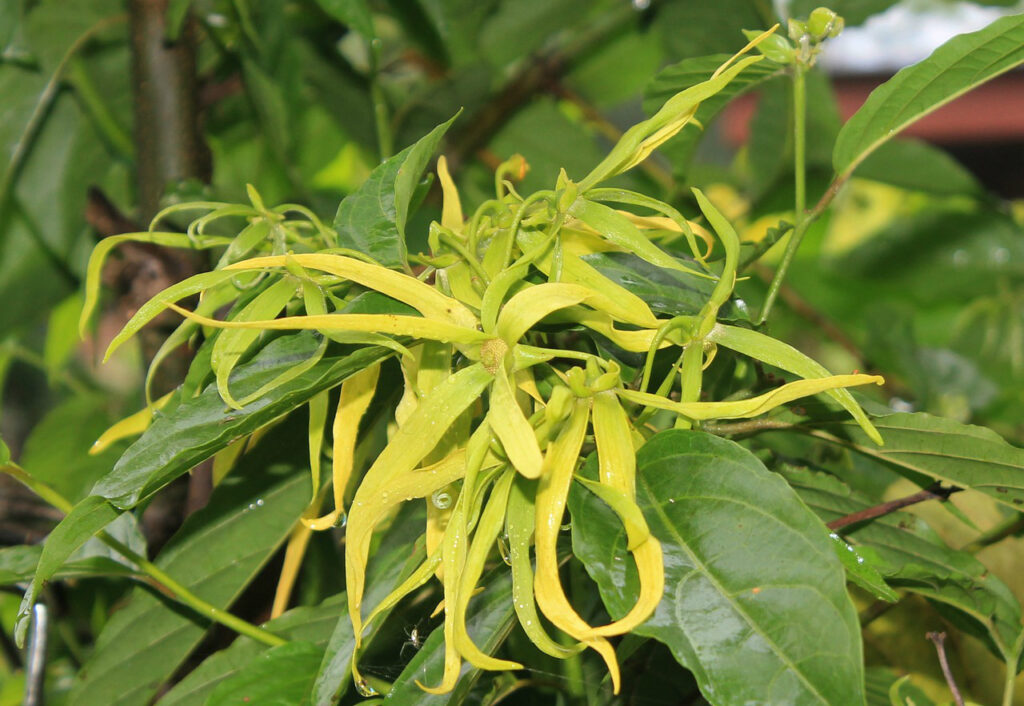How to Get Blood Out of a Mattress: 7 Effective Methods
When dealing with a blood stain on your mattress, it’s crucial to act promptly to prevent the stain from setting in. Blood is a protein stain, and these types of stains can be quite stubborn once they’ve dried.
- Immediate Steps to Take for Blood Stains
- 7 Blood Stain Removal Techniques
- Guidelines for Caring for Different Mattress Types
- Protective Measures and Prevention
- Aftercare and Maintenance
- How to Get Blood Out of a Mattress FAQs
- What methods are effective for removing dried blood stains from a mattress?
- Is it possible to eliminate period blood stains or dried blood from a mattress, and if so, how?
- Can dried blood be removed from an air mattress, and what techniques should be used?
- What alternatives exist for getting blood out of a mattress without using hydrogen peroxide?
- How can one remove blood stains from a mattress using household items like baking soda?
- In what ways can blood be extracted from bed sheets without damaging the fabric?
Fortunately, there are several methods you can use to remove blood effectively, reducing the likelihood that your mattress will bear a permanent mark. We’ll dive into those in depth in this post, but let’s cover a few highlights first.
- Cold water can be your first go-to solution, as it helps to dissolve fresh blood.
- Avoid hot water as it can cause the blood proteins to coagulate and bind to the fabric, making the stain more difficult to remove.
- If the blood has already dried, advanced treatments, such as using salt or baking soda, enzymatic cleaners, or hydrogen peroxide, may be necessary. Each of these solutions can break down the blood cells and lift the stain from the mattress fibers.
Additionally, proper technique is critical when cleaning blood stains. Dabbing rather than scrubbing prevents the stain from spreading. Always use gentle motions and give the cleaning agents enough time to work before you blot them away.
We know how difficult it can be to remove blood stains from fabric. We also know what it’s like to find out a child’s nose was bleeding, only to wonder how in the world we were going to clean everything in a way that would prevent stains.
Patience and careful application of the methods in this guide will ensure you’re prepared to clean in a way that prevents stains.
Immediate Steps to Take for Blood Stains
When you’re faced with a blood stain on your mattress, acting quickly is crucial. The following steps will guide you through assessing the situation, gathering the necessary supplies, and starting the cleaning process effectively.
Assessing the Blood Stain
First, identify whether the blood stain is fresh and review the area to ensure you have a good idea of the size of the area to be cleaned. You don’t want to clean one area only to find out you missed another once the stain’s already set in.
Fresh blood stains are easier to clean since you can prevent staining with a few simple and quick steps. Old blood stains are more difficult to remove, but not impossible.
Gathering Necessary Supplies
To deal with a blood stain, you will need to start with cold water (to help break down the fresh blood), paper towels or clean cloths (for blotting the stain), and a gentle detergent or stain remover in case the stain has set into the fabric.
We’ll cover a number of techniques and household items you can use as stain removers and preventers in a section below.
Initial Cleaning Approach
Begin by dabbing the stain with a paper towel soaked in cold water—never rub, as this can push the blood deeper into the mattress and spread the blood to the surrounding clean fabric.
The goal: As soon as possible, prevent the blood from drying.
Continue to blot the area, applying more cold water as needed until you have seen a reduction in the appearance of the stain. By this point, you’ve removed excess blood from the fabric, drastically decreasing the likelihood of heavy staining.
If the blood has not completely come out, proceed to treat the stain with a chosen cleaner (more on that below). In the meantime, keep the area wet and do not allow it to dry.
7 Blood Stain Removal Techniques
In case you didn’t know, you may have access to a number of powerful stain-cleaning household products all over your house. From salt to hydrogen peroxide, baking soda, and more, many common household items are effective stain cleaners.
We’ll cover a number of possible options to ensure you’re equipped to battle blood stains with the items you already have.
1.) Using Salt and Cold Water
To treat a fresh blood stain, mix 2 teaspoons of salt with 1 cup of cold water. Pour the solution into a spray bottle and liberally apply it to the stained area.
Blot with a clean, dry cloth to absorb as much liquid as possible, and repeat this process until the blood has been removed. The idea here is to dilute the stain, prevent it from binding by adding salt, and then absorb as much of it as possible with a dry cloth.
The idea is to pull the stain out of the mattress.
This salt and cold water method is most often effective on recent stains.
2.) Applying Hydrogen Peroxide
For more stubborn stains, hydrogen peroxide can be a powerful oxidizing agent. You can use this method for wet or dry blood stains.
Spray or dab 3% hydrogen peroxide onto the stained area. In case you didn’t know, the most common hydrogen peroxide solution you’ll find in most stores in the notorious brown bottle is 3%. So, if you ever bought hydrogen peroxide, that’s likely what you have.
- Spray or dab a small amount of peroxide directly onto the stain and allow it to fizz.
- Hydrogen peroxide has a bleaching effect, which helps to prevent staining.
- Fizzing will help to prevent stains from binding to the surface of the mattress.
- If you have a dark mattress, you may want to test in a small area first since peroxide may bleach darker fabrics.
The fizzing chemical reaction between the hydrogen peroxide and an enzyme called catalase in our blood will produce water as a byproduct. So, once the fizzing reaction is complete, lightly blot the area with a clean cloth to pull the stain out of the fabric.
Repeat as necessary until the stain has been removed.
3.) Baking Soda and Detergent Paste, Finished with Vinegar
- Mix 1 tablespoon of baking soda and 1-2 drops of dish soap (Dawn or DIY dish soap is preferred) with water to create a thick, soapy paste.
- Generously apply the paste to the area that needs to be cleaned and allow it to soak for 10 minutes.
- Pour or spray white vinegar onto the area and vigorously scrub with a cleaning brush or toothbrush while it’s fizzing.
The breaking down of the stain happens in step two; then, in step three above, the vinegar reaction causes fizzing while also neutralizing the base baking soda and dish soap ingredients. The fizzing will help to lift away the stains as you scrub them out of the fabric.
As you scrub the area, feel free to spray more vinegar or sprinkle more baking soda to keep the reaction going. Once the stain has been removed, spray the area with plain cold water and dab away any excess residue.
4.) Utilizing Enzyme Cleaner
An enzyme cleaner can break down proteins in the blood. Apply according to the product instructions, typically letting it sit for a period before blotting away. It’s especially effective for dried blood and can prevent the stain from setting.
5.) White Vinegar
We already included this household item in method three above, but vinegar is also a great stain remover when used by itself due to its high acidity.
All you’ll need to do is saturate the area with white vinegar, allow it to soak for 10-15 minutes, then sprinkle on baking soda and start scrubbing. Spray or pour a small amount of additional vinegar as needed while scrubbing until the stain is completely removed.
6.) Meat Tenderizer
Enzyme-based (bromelain or papin) meat tenderizer is a great stain remover and works by breaking down the proteins in the blood that make it difficult to clean from fabric.
Create a paste of cold water and meat tenderizer, apply it to the stain, then allow it to soak for 1 hour. After that, scrub the stain away using a scrubbing brush or a toothbrush. Alternate between scrubbing and spraying additional water until the stain is completely removed.
Once the stain has been visibly removed, use water and dab dry to remove any additional tenderizer residue.
7.) Oxygen Bleach
Unlike chlorine bleach, oxygen bleach is color-safe and less harsh, making it suitable for a variety of fabrics, including mattress covers. One example of oxygen bleach is OxyClean.
To use oxygen bleach, do the following:
- Dissolve some of the powder in cold water according to the package instructions.
- Apply the solution directly onto the blood stain, ensuring it’s fully saturated.
- Allow the solution to work on the stain for at least one hour, or for stubborn stains, let it sit for several hours or even overnight.
- After the stain has been treated, scrub and blot the area with a clean cloth to absorb oxygen bleach residue.
- Finally, rinse the spot with cold water and blot dry.
Oxygen bleach is particularly effective at breaking down and removing organic stains like blood without damaging the mattress fabric.
Guidelines for Caring for Different Mattress Types
When maintaining your mattress’s cleanliness, it’s crucial to tailor your approach to the specific type of mattress you own. Each material has unique properties that require particular care, especially when removing stains like blood.
Memory Foam Mattress Care
Memory foam mattresses demand careful handling due to their absorbent nature. Additionally, they can be quite fragile if you’re trying to clean the foam directly. It’s not recommended to scrub memory foam directly; rather, just clean the mattress cover that came with it or any fabric covering it that may be stained.
For blood stain removal, gently dab the area with a mixture of water and mild detergent, avoiding wetting the mattress too much. It’s important to let the surface dry completely since memory foam can trap moisture, leading to mold and mildew.
Allow the mattress to air dry before putting the linens back on.
Cleaning a Conventional Mattress
Conventional mattresses, typically featuring innerspring construction, are less prone to retaining moisture than memory foam mattresses yet require caution.
Use cold water, the methods we discussed earlier, or an enzyme-based cleaner solution for treating blood stains. Blot the stain instead of rubbing when possible to prevent the blood from penetrating deeper into the fibers.
For larger or more densely stained fabrics, you can use the previously mentioned scrubbing techniques and cleaning methods.
Handling an Air Mattress
Air mattresses are usually coated with a waterproof material, which makes cleaning a lot simpler.
In case of a small blood stain, gently wipe the area using a cloth soaked in soapy water. Rinse with a clean, damp cloth, and dry thoroughly to prevent any damage to the material.
For heavier stains, use the cleaning and scrubbing methods mentioned previously, ensuring that you thoroughly rinse all cleaning solutions before blotting dry.
Safeguarding a Latex Mattress
Latex mattresses are resilient to many forms of wear and tear but should be treated with attention during cleaning.
For blood stains, a gentle cleaner is preferred. Apply the solution to the stain, gently blot, and allow the mattress to air dry out of direct sunlight, as UV rays can degrade the latex quality.
Protective Measures and Prevention
Investing in preventative measures and maintaining a regular cleaning regimen are both essential to safeguarding your mattress from unwanted stains, including blood.
By employing the right protectors and bedding, coupled with consistent upkeep, you can extend the longevity and hygiene of your mattress.
Using Mattress Protectors
Mattress protectors are an indispensable first line of defense against spills and stains.
A waterproof mattress protector not only shields your mattress from blood but also other bodily fluids and potential allergens. It’s a simple addition that can be easily washed and replaced, ensuring any accidents don’t penetrate the surface of your mattress.
We know that for children, mattress covers are extremely useful. So, if you purchase a brand-new bed for your little one, be sure to get a mattress cover too.
Choosing the Right Bedding
Selecting the right bedding contributes significantly to preventing stains.
While silk sheets add a layer of luxury, they require delicate handling and are not the best at hiding stains. Instead, opt for high-quality cotton or moisture-wicking fabrics, which are easier to clean and more resilient against stains.
Regular change and washing of bedsheets will also minimize the presence of impurities that might eventually lead to stains.
Aftercare and Maintenance
Proper aftercare of your mattress after cleaning can extend its life and maintain a fresh sleeping environment.
Attention to regular maintenance tasks such as vacuuming and deodorizing, handling future spills promptly, and ensuring good ventilation post-cleaning will make a significant difference.
Vacuuming the Mattress
Regularly vacuuming your mattress is crucial in keeping it free from dust and allergens.
You should use the upholstery attachment of your vacuum to go over the entire surface of the mattress thoroughly. This is especially important following a deep clean to remove any residual particles.
Deodorizing with Baking Soda
To naturally eliminate odors, sprinkle baking soda liberally over your mattress after cleaning it. Let it sit for a few hours to absorb any lingering smells, then vacuum off the baking soda completely.
Even better, add a few drops of essential oil to your baking soda and sprinkle it on the mattress before vacuuming it away.
This simple method helps to keep your mattress smelling fresh.
Spot Cleaning Future Spills
When dealing with future spills, it’s important to act quickly.
Blot any liquid with a clean, dry towel and apply a small amount of cleaning solution suitable for your mattress.
Always follow up by blotting with a damp cloth and then drying the area thoroughly to avoid mildew.
Ensuring Adequate Ventilation
Maintain a comfortable room temperature and proper ventilation to help air out your mattress and prevent moisture buildup.
Occasional airing out on a sunny day can also freshen up the mattress and help keep it dry, contributing to its longevity.
Use a mattress pad or mattress cover as a protective barrier to enhance the clean condition of your mattress.
How to Get Blood Out of a Mattress FAQs
What methods are effective for removing dried blood stains from a mattress?
For dried blood stains from things like nosebleeds or period blood, it’s important to soften the stain first.
You can apply a paste made from water and a meat tenderizer, a mixture of salt and water, or even hydrogen peroxide to address the stain. For more info on cleaning methods, see the earlier list of 7 effective methods for cleaning blood stains from mattresses.
Once you’ve applied the solution, gently dab the area with a clean cloth and rinse with cold water.
Is it possible to eliminate period blood stains or dried blood from a mattress, and if so, how?
Yes, you can remove period blood stains from a mattress by using cold water and any of the methods mentioned earlier.
Apply the solution to the stain, then blot with a clean cloth.
If the stain persists, consider using an enzyme cleaner, which is designed to break down protein-based stains. Remember to always spot-test a small area of your mattress first to prevent unwanted damage.
Can dried blood be removed from an air mattress, and what techniques should be used?
Dried blood on an air mattress can be treated with a mix of cold water and a gentle detergent.
Apply this with a cloth and blot the area gently. If required, you can also use a mild enzyme cleaner. Scrubbing is okay, but be gentle to avoid damaging the outer material of your air mattress.
What alternatives exist for getting blood out of a mattress without using hydrogen peroxide?
If you prefer not to use hydrogen peroxide, you can create a mixture of cold water, baking soda, and dish soap to form a paste.
Apply this to the stain and let it dry before scraping it away. Some also suggest adding cornstarch to make a paste, but we don’t see any benefit to that, and it just makes things messier.
You could also use lemon juice or white vinegar, which act as natural bleaches due to their acidity, to lighten the stain. Then, rinse away the solution and dab dry with a clean absorbent cloth.
How can one remove blood stains from a mattress using household items like baking soda?
Baking soda is effective for removing blood stains. Sprinkle a generous amount over the stain, add a bit of cold water to create a paste, and wait for it to dry.
After that, you can spray or pour on a bit of white vinegar. This will lift the blood out of the mattress.
Finally, rinse and dry.
In what ways can blood be extracted from bed sheets without damaging the fabric?
To remove blood from bed sheets, soak them in cold water as quickly as possible, removing, rubbing some Dawn dish soap or vinegar into the soiled fabric, and allowing that to sit for 5-10 minutes. Finally, you can launder them on the cold water setting using your regular detergent.
Always avoid hot water, as it can set the blood stain in the fabric.


